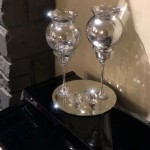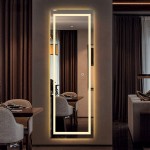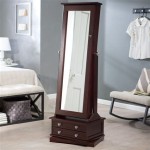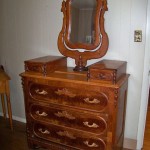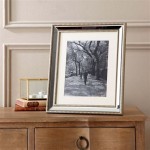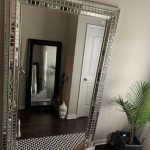Bathroom Mirror Hangers: A Comprehensive Guide
Selecting the appropriate hanging method for a bathroom mirror involves considering several factors, including the mirror's weight, size, and the wall's construction. This guide provides a comprehensive overview of various bathroom mirror hangers, highlighting their advantages, disadvantages, and installation processes.
Types of Bathroom Mirror Hangers
Several hanging mechanisms cater to different mirror sizes and wall types. Choosing the correct hanger ensures secure and stable mirror mounting.
1. J-Hooks: J-hooks are a common and cost-effective option, especially for lightweight mirrors. These metal hooks are screwed into the wall, and the mirror rests on them. They are easy to install but may not be suitable for heavier or larger mirrors.
2. Mirror Clips: These clips grip the edges of the mirror and are typically used in conjunction with adhesive or screws. They provide a more secure hold than J-hooks and offer a cleaner, minimalist aesthetic. Mirror clips are suitable for medium-weight mirrors.
3. D-Rings and Wire: This method involves attaching D-rings to the back of the mirror and connecting them with wire. The wire is then hung on hooks or screws in the wall. This method is suitable for heavier mirrors and allows for level adjustment.
4. French Cleats: French cleats offer a robust and concealed hanging system. One part of the cleat is attached to the wall, while the other is attached to the back of the mirror. The two pieces interlock, providing a strong and stable connection, ideal for heavy or oversized mirrors.
5. Adhesive: Specialized mirror adhesives provide a no-drilling solution. This option is convenient for lighter mirrors and renters who may want to avoid making holes in the wall. However, it's crucial to choose a high-quality adhesive specifically designed for mirrors to ensure a secure bond.
Choosing the Right Hanger
The ideal hanger depends on several crucial factors:
1. Mirror Weight: Heavier mirrors necessitate more robust hanging systems like French cleats or D-rings and wire. Lighter mirrors can be safely hung with J-hooks, mirror clips, or adhesive.
2. Mirror Size: Larger mirrors, regardless of weight, benefit from multiple hangers for even weight distribution. This prevents stress on any single point and ensures a secure hold.
3. Wall Type: Drywall requires specific anchors for heavier mirrors. Solid walls like concrete or brick offer more holding power and require appropriately sized screws.
Installation Best Practices
Proper installation ensures the mirror's longevity and safety. These guidelines apply to all hanger types:
1. Accurate Measurements: Precise measurements are essential for proper placement and level hanging. Use a level to ensure the mirror hangs straight.
2. Appropriate Hardware: Use the correct screws and anchors for the wall type and mirror weight. Undersized hardware can compromise the mirror's security.
3. Wall Preparation: Ensure the wall surface is clean and dry before installation. Repair any damaged areas to provide a solid mounting base.
4. Safety Precautions: When handling heavy mirrors, seek assistance to prevent injury and damage. Wearing safety glasses is recommended when drilling.
Maintaining Bathroom Mirror Hangers
Regular maintenance can extend the lifespan of the hanging system and prevent issues:
1. Periodic Inspection: Check the hangers for signs of wear or loosening, especially in humid bathroom environments. Tighten screws or replace damaged components as needed.
2. Cleaning: Clean the hangers and surrounding areas regularly to remove dust and grime that can contribute to corrosion or weakening of the adhesive.
Materials and Durability
Hangers are typically constructed from various materials, impacting their durability and resistance to the humid bathroom environment:
1. Stainless Steel: Stainless steel offers excellent corrosion resistance, making it a preferred choice for bathroom environments. It provides strength and longevity.
2. Brass: Brass provides a decorative touch and good corrosion resistance. It offers a classic aesthetic but may require occasional polishing.
3. Zinc Alloy: Zinc alloy is a cost-effective option that offers decent corrosion resistance. It's a suitable choice for lighter mirrors.
Weight Capacity Considerations
Understanding weight capacity is crucial for safe and secure mirror hanging:
1. Check Manufacturer Specifications: Always refer to the manufacturer's guidelines for the weight limits of specific hangers. Exceeding the recommended weight capacity can lead to the mirror falling and causing damage or injury.
2. Distribute Weight Evenly: When using multiple hangers, ensure the weight is evenly distributed to prevent stress on individual hangers and the wall itself.
3. Overestimate Weight: When in doubt, it's best to overestimate the weight of the mirror and choose a hanger with a higher weight capacity.

How To Pick And Hang The Perfect Bathroom Mirror Roomhints

Rounded Rectangular Hanging Rod Mirror Hotel Bathroom Homestay Luminous China Frame Glass Modern Made In Com

Suspended Mirror Bath

Modern Smart Bathroom Mirror Hanging Toilet Round Makeup With Lamp Wall Hair Salon Barber Luminous China Frame Glass Made In Com

Ceiling Suspended Vanity Mirrors Design Ideas

How To Pick And Hang The Perfect Bathroom Mirror Roomhints

Hanging Rod Double Sided Mirror Bathroom Ceiling Luminous Hotel Ping Mall China Frame Glass Modern Made In Com

10 Vanity Decor Items To Brighten Up Your Bathroom Hunker Round Mirror Design Hanging

Arezzo Matt Black Hanging 600mm Round Bathroom Mirror

Hanging Bathroom Mirror Hollywood Regency At Home In Arkansas

